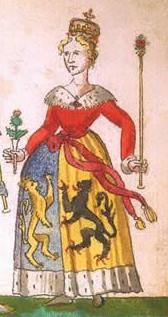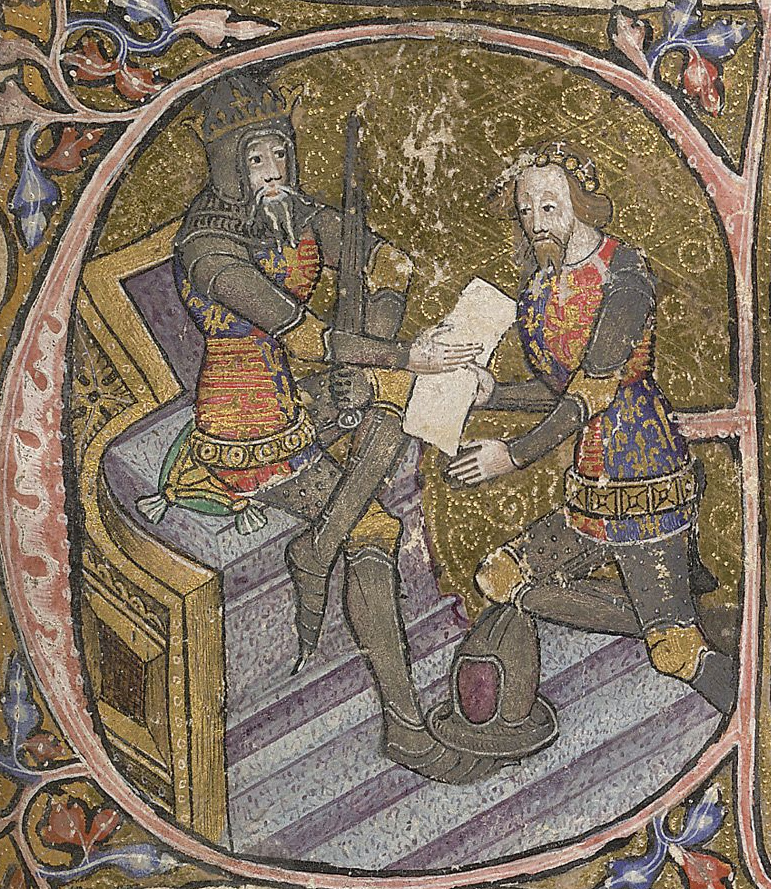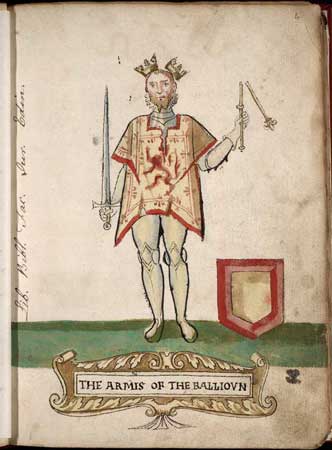|
Old Tolbooth
The Old Tolbooth was an important municipal building in the city of Edinburgh, Scotland, for more than 400 years. The medieval structure, which was located at the northwest corner of St Giles' Cathedral and was attached to the west end of the Luckenbooths on the High Street in the Old Town, was first established in the 14th century by royal charter. Over the years it served a variety of purposes such as housing the Burgh Council, early meetings of the Parliament of Scotland and the Court of Session. The Tolbooth was also the burgh's main jail where, in addition to incarceration, physical punishment and torture were routinely conducted. From 1785 public executions were carried out. In 1817 the buildings, which had been rebuilt and renovated several times, were demolished. History A deed in the chartulary of St Giles' Cathedral indicates there was already a pretorium (an earlier Latin term for a tolbooth) in Edinburgh as early as 1368. Following the burnings of Edinburgh by E ... [...More Info...] [...Related Items...] OR: [Wikipedia] [Google] [Baidu] |
Seat Of Local Government
The seat of government is (as defined by ''Brewer's Politics'') "the building, complex of buildings or the city from which a government exercises its authority". In most countries, the nation's capital is also seat of its government, thus that city is appropriately referred to as the national seat of government. The terms are not however, completely synonymous, as some countries' seat of government differs from the capital. The Netherlands, for example, has Amsterdam as its capital but The Hague is the seat of government; and the Philippines, with Manila as its capital but the metropolitan area of the same name (Metro Manila; also known as National Capital Region (NCR)), is the seat of government. Local seats of government Local and regional authorities usually have a seat, called an administrative centre, as well. Terms for seats of local government of various levels and in various countries include: * County seat (United States and Canada) * County town (United Kingdom and I ... [...More Info...] [...Related Items...] OR: [Wikipedia] [Google] [Baidu] |
Model Of The Edinburgh Tolbooth
A model is an informative representation of an object, person, or system. The term originally denoted the plans of a building in late 16th-century English, and derived via French and Italian ultimately from Latin , . Models can be divided into physical models (e.g. a ship model or a fashion model) and abstract models (e.g. a set of mathematical equations describing the workings of the atmosphere for the purpose of weather forecasting). Abstract or conceptual models are central to philosophy of science. In scholarly research and applied science, a model should not be confused with a theory: while a model seeks only to represent reality with the purpose of better understanding or predicting the world, a theory is more ambitious in that it claims to be an explanation of reality. Types of model ''Model'' in specific contexts As a noun, ''model'' has specific meanings in certain fields, derived from its original meaning of "structural design or layout": * Model (art), a person ... [...More Info...] [...Related Items...] OR: [Wikipedia] [Google] [Baidu] |
Steeple (architecture)
In architecture, a steeple is a tall tower on a building, topped by a spire and often incorporating a belfry and other components. Steeples are very common on Christian churches and cathedrals and the use of the term generally connotes a religious structure. They might be stand-alone structures, or incorporated into the entrance or center of the building. Architecture Towers are a common element of religious architecture worldwide and are generally viewed as attempts to reach skyward toward heavens and the divine. Towers were not a part of Christian churches until about AD 600, when bell towers first came into use. At first they were fairly modest and entirely separate structures from churches. Over time, they were incorporated into the church building and capped with ever-more-elaborate roofs until the steeple resulted. Some wooden steeples are built with large wooden structural members arranged like tent poles and braced diagonally inside both with wood and steel. The st ... [...More Info...] [...Related Items...] OR: [Wikipedia] [Google] [Baidu] |
Heart Of Midlothian (Royal Mile)
The Heart of Midlothian is a mosaic located outside St Giles' Cathedral in Edinburgh. The heart marks the location of the entrance to Edinburgh's Old Tolbooth which was demolished in 1817. Locals will often spit upon the heart as a sign of good luck. While the tradition is now one of good luck, it was originally believed to be done as a sign of disdain for the executions which took place within the Old Tolbooth. The Edinburgh football team Heart of Midlothian F.C. Heart of Midlothian Football Club, commonly known as Hearts, is a professional football club in Edinburgh, Scotland. The team competes in the , the top division of Scottish football. Hearts, the oldest football club in the Scottish capital, wa ... takes its name from the Old Tolbooth, and the mosaic which marks its former location. The Heart of Midlothian mosaic located in the Royal Mile has also inspired numerous company logos such as that of the Heart of Midlothian football club. References External links ... [...More Info...] [...Related Items...] OR: [Wikipedia] [Google] [Baidu] |
Sett (paving)
A sett, also known as a block or Belgian block, is a broadly rectangular quarried stone used in paving roads and walkways. Formerly in widespread use, particularly on steeper streets because setts provided horses' hooves with better grip than a smooth surface, they are now encountered more usually as decorative stone paving in landscape architecture. Setts may be referred to incorrectly as ''cobblestones'', but a sett is distinct from a cobblestone in that it is quarried or worked to a regular shape, whereas the latter is generally a small, naturally-rounded rock. Setts are usually made of granite. Places Europe Places paved with setts include many streets in Rome and elsewhere in Italy (where blocks are called or ), since the technique was first used by Romans. In Aberdeen (Scotland), and much of Edinburgh's Old Town and New Town, a large number of streets retain the original setts. Silloth on Solway, a seaside town in Cumbria, still has setts (originally laid in the ... [...More Info...] [...Related Items...] OR: [Wikipedia] [Google] [Baidu] |
James II Of Scotland
James II (16 October 1430 – 3 August 1460) was King of Scots from 1437 until his death in 1460. The eldest surviving son of James I of Scotland, he succeeded to the Scottish throne at the age of six, following the assassination of his father. The first Scottish monarch not to be crowned at Scone, James II's coronation took place at Holyrood Abbey in March 1437. After a reign characterised by struggles to maintain control of his kingdom, he was killed by an exploding cannon at Roxburgh Castle in 1460. Life James was born in Holyrood Abbey. He was the son of King James I and Joan Beaufort. By his first birthday, his only brother, his older twin, Alexander, had died, thus leaving James as heir apparent with the title Duke of Rothesay. On 21 February 1437, James I was assassinated, and the six-year-old James immediately succeeded him as James II. He was crowned in Holyrood Abbey by Abbot Patrick on 25 March 1437. On 3 July 1449, the eighteen-year-old James married t ... [...More Info...] [...Related Items...] OR: [Wikipedia] [Google] [Baidu] |
Robert II Of Scotland
Robert II (2 March 1316 – 19 April 1390) was List of Scottish monarchs, King of Scots from 1371 to his death in 1390. The son of Walter Stewart, 6th High Steward of Scotland, and Marjorie Bruce, Marjorie, daughter of King Robert the Bruce, he was named Robert Stewart. Upon the death of his uncle David II of Scotland, David II, Robert succeeded to the throne as the first monarch of the House of Stuart. Edward Bruce had been the List of heirs of Scotland, heir presumptive for his older brother Robert the Bruce, but Edward had no children when he was killed in the Battle of Faughart on 14 October 1318. Marjorie Bruce had died probably in 1317 in a riding accident and Parliament of Scotland, Parliament decreed her infant son, Robert Stewart, as heir presumptive, but this lapsed on 5 March 1324 on the birth of a son, David, to King Robert and his second wife, Elizabeth de Burgh. Robert Stewart became High Steward of Scotland on his father's death on 9 April 1327, and in the same y ... [...More Info...] [...Related Items...] OR: [Wikipedia] [Google] [Baidu] |
Richard II Of England
Richard II (6 January 1367 – ), also known as Richard of Bordeaux, was King of England from 1377 until he was deposed in 1399. He was the son of Edward the Black Prince, Edward, Prince of Wales (later known as the Black Prince), and Joan, Countess of Kent. Richard's father died in 1376, leaving Richard as List of heirs to the English throne, heir apparent to his grandfather, King Edward III; upon the latter's death, the 10-year-old Richard succeeded to the throne. During Richard's first years as king, government was in the hands of a series of regency councils, influenced by Richard's uncles John of Gaunt and Thomas of Woodstock. England at that time faced various problems, most notably the Hundred Years' War. A major challenge of the reign was the Peasants' Revolt in 1381, and the young king played a central part in the successful suppression of this crisis. Less warlike than either his father or grandfather, he sought to bring an end to the Hundred Years' War. A firm ... [...More Info...] [...Related Items...] OR: [Wikipedia] [Google] [Baidu] |
Wars Of Scottish Independence
The Wars of Scottish Independence were a series of military campaigns fought between the Kingdom of Scotland and the Kingdom of England in the late 13th and 14th centuries. The First War (1296–1328) began with the English invasion of Scotland in 1296 and ended with the signing of the Treaty of Edinburgh–Northampton in 1328. The Second War (1332–1357) began with the English-supported invasion by Edward Balliol and the "Disinherited" in 1332 and ended in 1357 with the signing of the Treaty of Berwick. The wars were part of a great crisis for Scotland, and the period became one of the most defining times in its history. At the end of both wars, Scotland retained its status as an independent state. The wars were important for other reasons, such as the emergence of the longbow as a key weapon in medieval warfare. The First War of Independence: 1296–1328 Background King Alexander III of Scotland died in 1286, leaving his three-year-old granddaughter Margaret, Maid ... [...More Info...] [...Related Items...] OR: [Wikipedia] [Google] [Baidu] |
Edward III Of England
Edward III (13 November 1312 – 21 June 1377), also known as Edward of Windsor before his accession, was King of England from January 1327 until his death in 1377. He is noted for his military success and for restoring royal authority after the disastrous and unorthodox reign of his father, Edward II. Edward III transformed the Kingdom of England into one of the most formidable military powers in Europe. His fifty-year reign is List of monarchs in Britain by length of reign#Ten longest-reigning British monarchs, one of the longest in English history, and saw vital developments in legislation and government, in particular the evolution of the English Parliament, as well as the ravages of the Black Death. He outlived his eldest son, Edward the Black Prince, and was succeeded by his grandson, Richard II. Edward was crowned at age fourteen after his father was deposed by his mother, Isabella of France, and her lover, Roger Mortimer, 1st Earl of March, Roger Mortimer. At the age of ... [...More Info...] [...Related Items...] OR: [Wikipedia] [Google] [Baidu] |
Edward II Of England
Edward II (25 April 1284 – 21 September 1327), also known as Edward of Caernarfon or Caernarvon, was King of England from 1307 until he was deposed in January 1327. The fourth son of Edward I, Edward became the heir to the throne following the death of his older brother Alphonso, Earl of Chester, Alphonso. Beginning in 1300, Edward accompanied his father on Wars of Scottish Independence, campaigns in Scotland, and in 1306 he was Knight#Evolution of medieval knighthood, knighted in Feast of the Swans, a grand ceremony at Westminster Abbey. Edward succeeded to the throne the next year, following his father's death. In 1308, he married Isabella of France, Isabella, daughter of the powerful King Philip IV of France, as part of a long-running effort to resolve the tensions between the English and French crowns. Edward had a close and controversial relationship with Piers Gaveston, who had joined his household in 1300. The precise nature of Edward and Gaveston's relationship ... [...More Info...] [...Related Items...] OR: [Wikipedia] [Google] [Baidu] |









